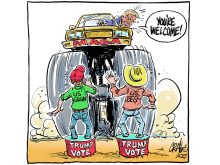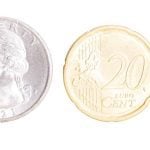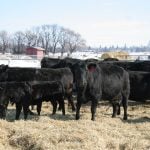FERTILIZER prices have been a sore point for farmers for more than a year. They soared through 2007 and the first half of 2008 along with grain prices, but when grain crashed in August, fertilizer remained high through the fall, when many farmers traditionally stock up.
Only in winter did nutrient values fall, although even then prices were much higher than most of this decade.
So it was galling when the president and chief executive officer of PotashCorp. took the opportunity at a recent quarterly report update to chastise the rest of the fertilizer industry for caving in and letting prices roll back as much as they have.
Read Also

Finding the sweet spot where ag science meets ag culture
Soon, many will look at practices such as seeding marginal acres to forage, growing cover crops and livestock integration and ask why they didn’t do this sooner.
Bill Doyle said the rest of the industry should have followed his company’s example – limiting production to maintain price – to force users to continue to pay top dollar.
Farmers have no choice. They have to buy to maintain crop yields and income.
“Dropping the price does not increase demand on fertilizer products, it only destroyed value for those companies producing those products,” Doyle said.
Frustration with fertilizer prices was apparent at a recent House of Commons agriculture committee meeting, where members grilled Canadian Fertilizer Institute executives and even accused the sector of price gouging.
Committee members agreed to ask the Competition Bureau to investigate the industry’s practices. Public scrutiny is valid because of fertilizer’s critical role in feeding the world’s growing population.
As Doyle noted, if profits are not enough to encourage companies to replace product that has been used and to expand production in step with demand, then shortages will develop that will likely spark emergency price increases.
Expanding potash production is expensive. Doyle estimates a new mine could cost as much as $4 billion.
But fertilizer company profits in 2008 far exceeded what is needed to maintain growth. PCS posted profit of about $3.5 billion, a 217 percent increase over the year before. Mosaic profits increased 400 percent. Agrium’s were up 222 percent. Those gains were on top of big increases the year before.
Meanwhile, net operating income for Canadian grain and oilseed farmers in 2008 increased by 31 percent over 2007.
Fertilizer company profits so far in 2009 are down from last year’s record levels, because farmers held off buying to try to pressure the market lower and because prices did fall. But profits are still strong compared to recent years.
Canadian Fertilizer Institute executives defended the industry’s competitiveness, arguing it has 43 members in the organization, each making its own decisions.
But the reality is that three or four companies dominate the market.
On the other side of the buy-sell relationship are tens of thousands of farmers. Market power is in the fertilizer companies’ hands.
It’s an inequity that deserves review by competition authorities.
The Competition Bureau’s record on meat packing concentration, gasoline prices and credit card rates gives little hope for bold action, but at least it should provide more information on the fertilizer sector’s dealings.
Bruce Dyck, Terry Fries, Barb Glen, D’Arce McMillan and Ken Zacharias collaborate in the writing of Western Producer editorials.














